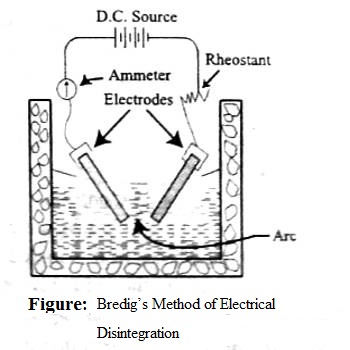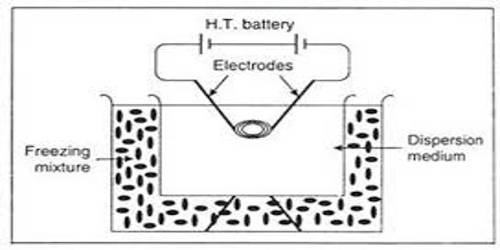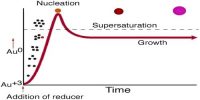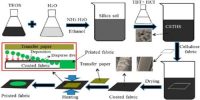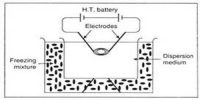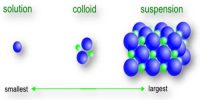Disintegration or Dispersion method
Whatever may be the technique the method consists in disintegrating or pulverizing a large form of the substance to colloidal dimension and then dispersing it in an appropriate medium in presence of a suitable stabilizer. The disintegration method may be of two types:
(a) Mechanical Disintegration (b) Electrical Disintegration.
(a) Mechanical disintegration: In this process, the substance is reduced to particles of colloidal dimension by a purely mechanical device, such as a colloid mill. The substance is generally placed between the annular gap of swiftly revolving discs or cylinders. Under the extremely powerful shearing force created by the oppositely rotating discs or cylinders, the substance is broken down to fine particles. Coarse particles are removed and the pulverized material is dispersed in a liquid containing a stabilizer. The method is not of general applicability.
(b) Electrical disintegration: Bredig was the originator of disintegrating metals into sols by means of an electric arc. Two metallic electrodes dipped in water, as shown in Figure are connected to a D.C. source. A rheostat and an ammeter are connected in series for controlling current. On passing the current an arc is produced near the ends of the electrodes and a metal sol results.
